A middle-aged couple find themselves unable to stop thinking about a bear shooting they read about in the news. A bear had become stranded in the town center of Carmel-by-the- Sea and was killed by police. Locals had spotted it loping around. “The bear had lost its ambition, maybe it was looking for Goldilocks,” the husband jokes. His wife has stopped feeling the need to laugh at his jokes.
“This is just sad as hell,” she says. “Why couldn’t they have captured it and taken it back to the mountains?” The husband keeps trying to make her laugh, saying things about how the bear probably thought it had landed a cameo role in a Disney flick. “That town,” he says, “is a storybook town of wealthy elves.” The wife, whose brain can get stuck on sad images, walks around shaking her head.
Near their anniversary, she has an idea: “Why don’t we drive over there to see the ladybug orgy tree?” She’s been reading in a nature magazine about what happens in May. There’s a stand of redwoods where thousands of ladybugs gather to mate every year. There are photos of the branches dripping with ladybug love—lumpy, weird and alive.
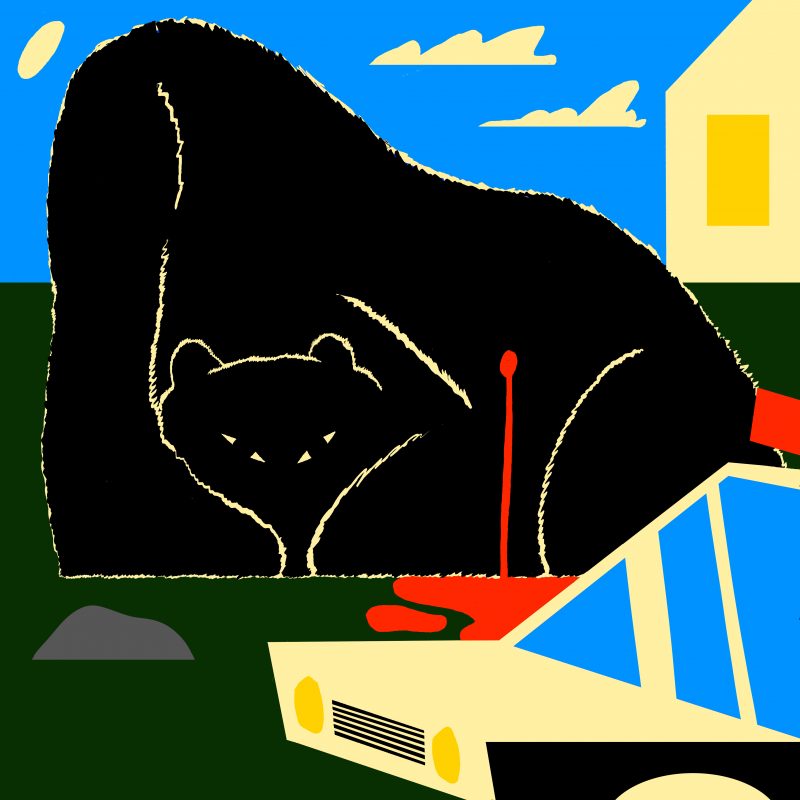
After my return from the hospital a neighbor leaves a newspaper article in my mailbox like a welcome home gift. In downtown Carmel-by-the-Sea, a branch from a large redwood tree, known widely for the proliferation of mating ladybugs on its lower branches, collapsed, leaving one male tourist dead and a woman in critical condition.
Since returning home from the hospital, I have found so many photographs of myself and a tired looking man with glasses. We lived in this house, we engaged in domestic poses. I don’t remember anything about the tree branch falling, but his glasses live here with me now and sometimes I look through them to see what the man who was my husband saw.
The prescription doesn’t work for me, but what I can see are floating pieces of lint. The man in the photographs with his arms around me doesn’t look anything like one I see in dreams.
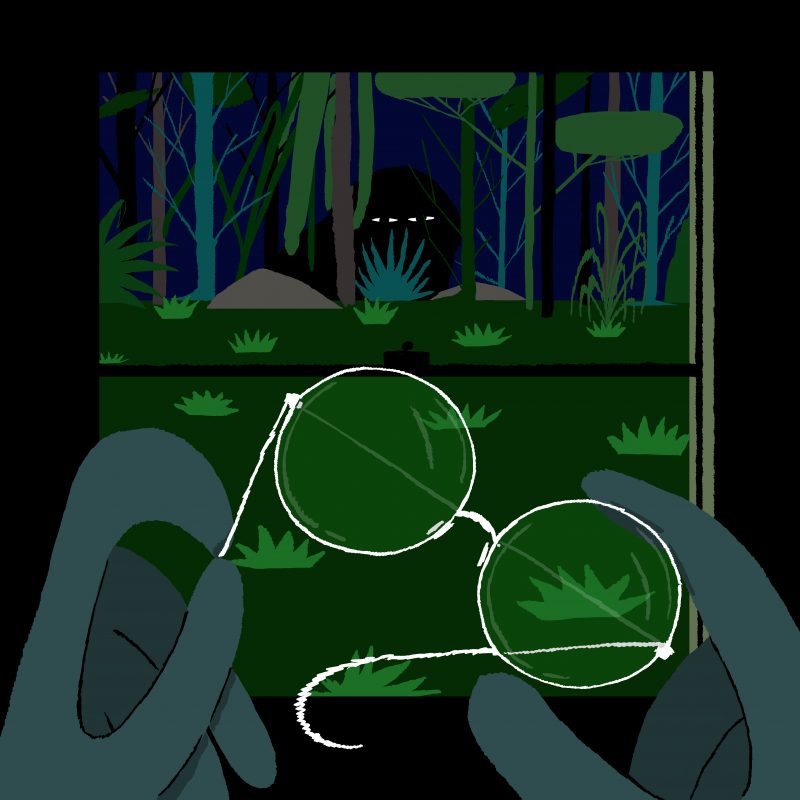
“What is that screeching sound?” a mother might have said to her boy who was growing up too fast—a kid who was zipping through childhood. “Can you hear some crazy bird out there in that tree?”
The child may have been a boy who already wore glasses. I can imagine this boy nodding his head, bored with his mother’s weak imagination. He may have felt that the singing had to do with being poised in a tree outside a locked window—paying attention to a world who didn’t care to identify it. The kind of boy who became the man who I would love until a branch fell on top of him would walk outside with binoculars just to see this bird for himself.
What makes me think about unidentifiable birds is the visit today from a woman who claims to be my aunt. She brings me homemade enchiladas with instructions on how to freeze them. Here is what she tells me for no particular reason: “A bird doesn’t stop singing just because it doesn’t know the answer.”
And she’s right. I believe that a bird sings for the following reasons:
It sings because it likes to sing.
It sings because its wings beat quietly.
It sings because of the air.
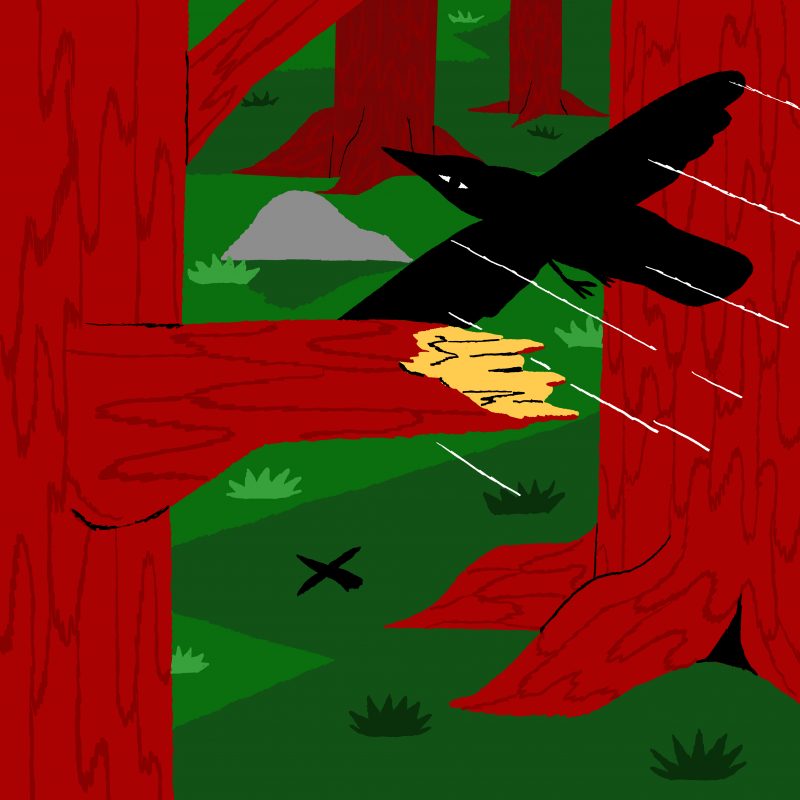
Seeing the doctor, I wore a bright red blouse, electric blue eyeshadow— dotted my lids. I grinned, I beamed, I levitated. “Your assignment, young lady,” he said, “is connecting the dots back together.” A bird perched on his window ledge was chirping, competing with his white noise machine.
Sometimes he would stand up unexpectedly. Would rise and he would ask me if I wanted some tea. He kept an electric kettle in the corner of his office, next to a plastic palm tree. When he rose, I could imagine him multiplying in his chair.
“What did we piece together today?” he said.
“Driving over to see the ladybug tree would have felt like a breeze. We would have gotten into our car, turned on the ignition. We would have driven there as slowly as we liked,” I said, trying to remember the look of Carmel-by-the-Sea, with its thatched-roof houses. I didn’t like this part of the session and my mind floated. I thought about sitting on the doctor’s knee and kissing his glasses.

I’m staying in a plush retreat center in the Sierra Nevada mountains where ruined people go. The kind of woman who says she’s my aunt has sent me there. “You need a break from your empty house,” she said, and she drove me there with a suitcase packed with a wide-brimmed cap, hiking t-shirts and sweat-wicking socks.
So here I am! In the mountains! Sketching a boy with glasses in a room filled with other shells of people. They look furtive, the game players and non-game players like me. We sit in a meeting room filled trying not to stare. The others play board games when not minding their minds. So far, I have no interest in joining their social activities.
A sign on the wall of this room says, “we become what we think.” Another sign says, “wherever you are, be there totally.” A sign near the door says, “Bear Area, Walk Cautiously.”
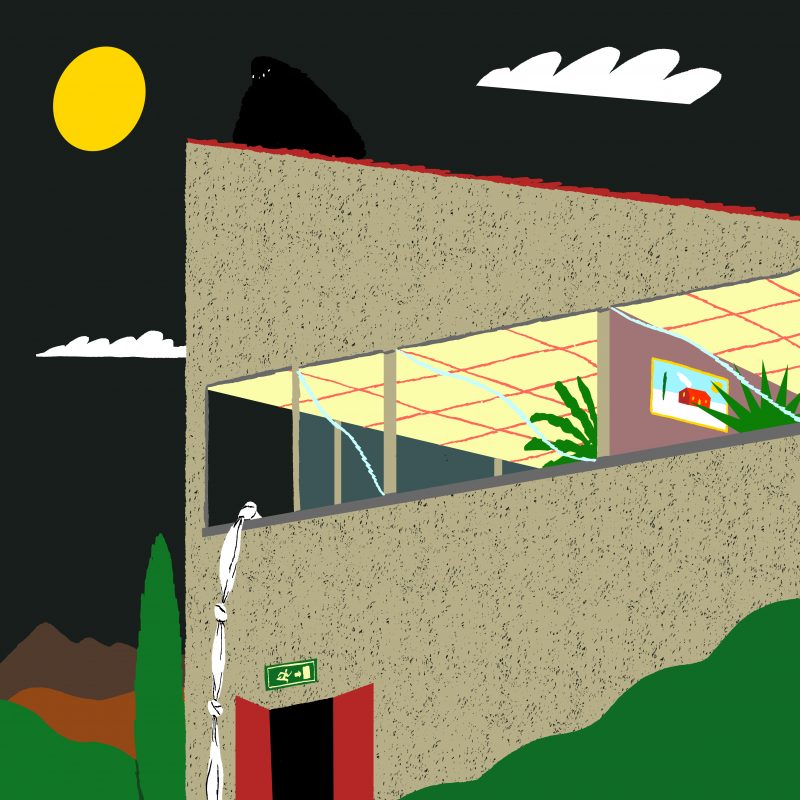
“How do you like it?” my aunt writes to me. I’m reading her email while sitting in the only room with a WIFI signal where they let us read emails. I’m starting to connect the dots I write, knowing this will please her.
I go on to explain that I can’t picture my husband as a man but can feel him as a boy. That I’ve been sketching a boy who would tie sheets together and climb down from his bedroom window to see what is stuck inside the trees. I can see him in a corner of my mind, can feel him opening his bedroom window.
“The thing I’m having some trouble processing,” I write to my aunt, “is the way the world will open a portal just to see what will happen next. And when the mood is right, there will be a pull in the air.”
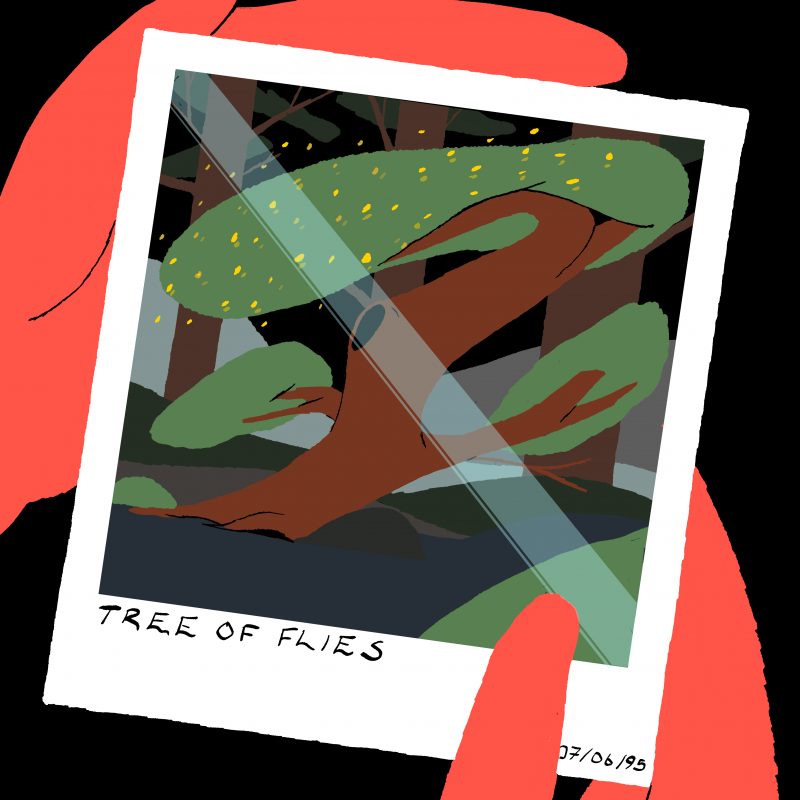
Back at home now I sometimes imagine a man and a woman in the living room next to each other, heavy with love. Telling each other that the sight of a ladybug orgy is something they need to see for themselves. Sometimes they worry that they’ve become too close to each other.
I stand near the window, coffee in hand, watching the sun sneak out of its cave. Even a finger of daylight threatens to squash the relief out of last night’s dream. In the dream, a bear climbs down from a city-sick tree, lumbers safely back into the wilderness.
I continue to study the photos and follow the dots. Two lovers nesting right here on this sofa. Leaning and smiling— as if about to mate. My husband, with his oversized glasses, stuck on me.
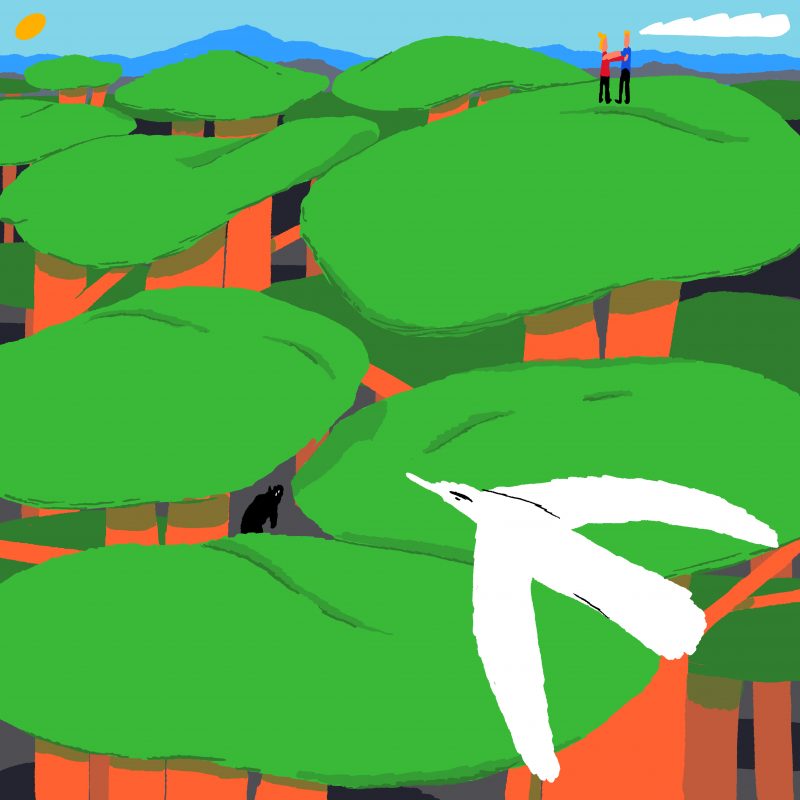
Meg Pokrass is the author of seven flash fiction collections and recipient of the Blue Light Book Award twice, for “Cellulose Pajamas” (Blue Light Press, 2015) and “Spinning to Mars” (Blue Light Press, 2021). Her work has appeared in hundreds of literary journals and anthologies and has been published in two Norton anthologies of the flash fiction form: Flash Fiction International (W.W. Norton, 2015) and New Micro (W.W. Norton, 2018). She is the Founder of New Flash Fiction Review and Founding Co-Editor of Best Microfiction.
Jack Fletcher is a freelance illustrator based in Edinburgh, Scotland. His work revolves around form, colour, movement of people, places, objects, and interactions.